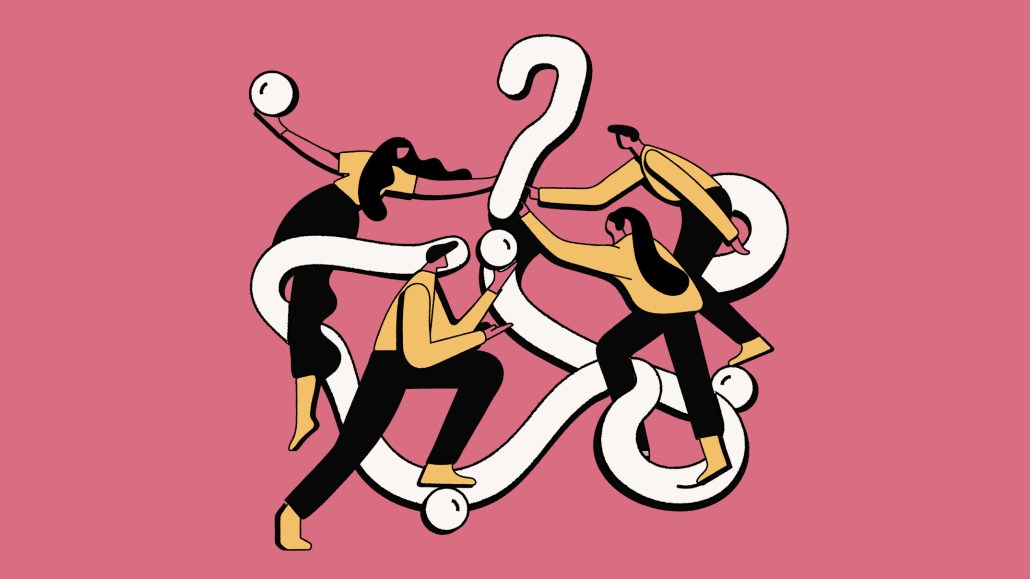How Estonia adjusted its national branding strategy in response to the war in Ukraine

In response to the Russian invasion of Ukraine, the nation of Estonia is touting what it sees as democratic values as part of its multi-pronged national branding strategy.
Estonia, which borders Russia in northeast Europe, has invested in a national branding effort since the early 2000s — a push to consciously reshape the nation’s image and draw increased interest from tourists and entrepreneurs. It codified the practice in 2016, when the Estonian government officially formed Brand Estonia, the agency in charge of the effort. (Editor’s note: The government of Estonia paid for this reporter to travel and board for a two-day press tour).
“Brand Estonia was developed by Enterprise Estonia, which has now turned into the business innovation agency,” said Stina Vürmer, a project manager for Brand Estonia. “So we are subdivisions with their own goals and topics, and Brand Estonia is like the umbrella that we all use, in terms of visual communication.”
In addition to creating a brand identity for Estonia, including custom logos, color schemes and fonts, Brand Estonia has largely focused its messaging on three pillars, according to Brand Estonia founding member Alari Orav: Estonia’s digital nationhood, its natural beauty and its prioritization of freedom of thought.
So far, the effort has been a success. “Estonia was one of the most-searched countries for entrepreneurship, ahead of the U.K. and Hong Kong, which are established brands, and right after Israel, which is considered the start-up nation,” said Jose Torres, CEO of the national branding agency Bloom Consulting, citing internal figures from a journal article his company published on the topic. “We saw an 83% growth in terms of people searching for Estonia from 2015 to 2018.”
Following Russia’s invasion of Ukraine in February, Brand Estonia officially added a fourth pillar to its national brand: the country’s embrace of democratic values to assure potential visitors and investors that Estonia will not fall under Russia’s influence, even in the face of mounting aggression by the larger nation.
“We didn’t want to just say it was about safety, though of course it was about safety,” Orav said. “But it’s also about defending democratic values.”
Estonia’s redoubled national branding push is reflected in the nation’s official government policies. Estonian Prime Minister Kaja Kallas developed a reputation as Europe’s “new Iron Lady” for her outspoken criticism of Russian aggression and commitment of considerable materiel support to Ukraine; in March, Estonia suspended its e-residency program for applicants from Russia and Belarus.
“They’re a small country, and they know exactly what they are. And what they are is, they’re not Russia,” said Natasha Grand, director of the Institute for Identity, a national branding firm. “Even before the Ukrainian crisis started, if you look at their brand values, the first thing they say is that they’re a democracy.”
As the war in Ukraine continues, there are potential challenges to Estonia’s new approach to its national brand. Russians represent the largest group of Estonian e-residents, and Estonia’s hard-line approach could risk alienating individual Russians, rather than simply standing against actions taken by the Russian government. But Estonia’s rapid response to Russia’s invasion of Ukraine shows how countries must carefully shepherd their national branding to react to geopolitical events.
“A brand is a living thing. Like a country, it’s always changing,” Orav said. “Every year, I think we’re done with this, and then something else comes up.”
More in Marketing

In the marketing world, anime is following in the footsteps of gaming
As marketers look to take advantage of anime’s entry into the zeitgeist, they might be wise to observe the parallels between the evolution of anime as a marketing channel and the ways brands have learned to better leverage gaming in recent years.

With the introduction of video ads and e-commerce, Roblox looks to attain platform status
Roblox is expanding into more areas than just ads in 2024. Much like platforms such as Amazon and Facebook have transcended their origins to evolve from their origins as online marketplaces and social media channels, Roblox is in the midst of a transformation into a platform for all elements of users’ virtual lives.

PepsiCo wants to remain a ‘driver of culture’ as it turns to influencers and activations amid rebrand
The soda-maker says it can translate cultural relevance into sales volume.
Ad position: web_bfu





